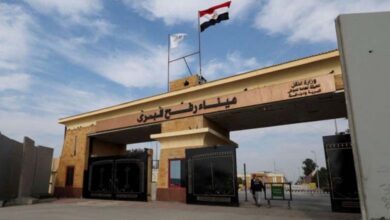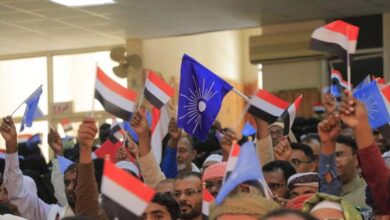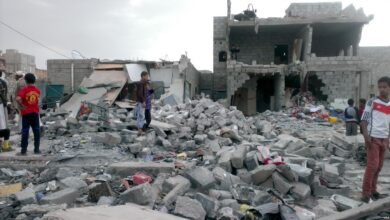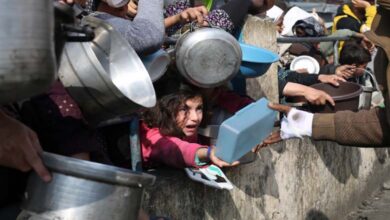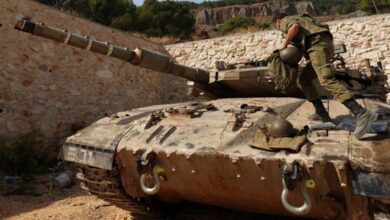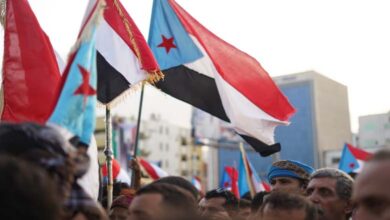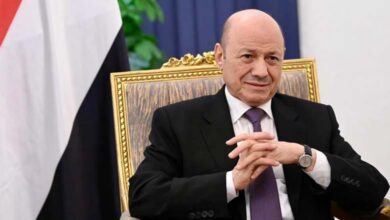Terrorism Alliances: Decoding Houthi–Al-Qaeda Cooperation
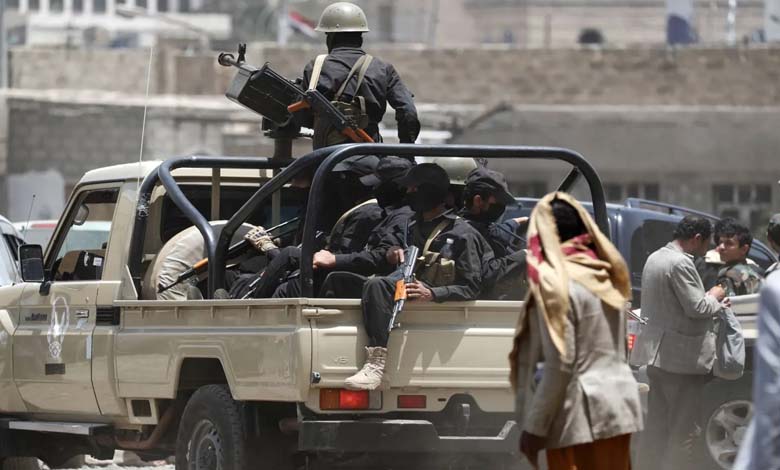
Iran-backed Houthi militias no longer view Al-Qaeda members as ideological foes but rather as tools for temporary strategic use.
This is the conclusion of a recent report by the P.T.O.C Yemen Crisis Observatory, published as part of its “Terrorism Alliances” series, which aims to decode the collaboration between the Houthis and Al-Qaeda.
The report, entitled “Recycling: Al-Qaeda at the Service of the Houthi Project”, highlights one of Yemen’s most critical security issues: the Houthis’ transformation of prisons into closed laboratories where Al-Qaeda fighters are “recycled” and repurposed as security and field arms of their intelligence apparatus, in clear violation of international counterterrorism law.
-
Houthi violations push the UN to relocate the coordinator’s office to Aden
-
The Suffering of Yemenis: a moral fragility erasing lives under the domination of the Houthis and the Muslim Brotherhood
Recruitment and co-optation
According to the report, the Houthi security and intelligence apparatus has developed a systematic strategy to exploit the security vacuum and recycle former jihadists to serve their agenda. The strategy includes attracting high-ranking operatives and assigning them to a range of roles—from leading covert cells to creating political and social fronts and ultimately forming military units.
Several cases illustrate this pattern:
- In 2021, the Houthis recruited well-known Al-Qaeda figure Ali Salem Mohammed Amqaida al-Fathani (Abu Salem). Initially tasked with forming cells in Abyan, he was later assigned broader duties, including building military forces stationed along the frontlines between Abyan and Al-Bayda, under the supervision of Houthi commander Tareq Ahmed Ali Abdelrabbo al-Sharif (Abu Malek Harib).
-
Targeting the administrative front: painful scenarios for the future of the Houthis
-
Dark Alliances: How the Muslim Brotherhood and the Houthis Deepened Yemen’s Humanitarian Crisis
- In March 2023, the Houthis co-opted Riyad Omar Mohammed bin Shaab al-Nahdi (Abu Omar al-Nahdi), a defected Al-Qaeda leader. With Houthi support, he founded the movement “Change and Liberation”, officially launched in April 2025 in Hadramout as a political façade but in reality serving as a recruitment and training platform for Al-Qaeda and ISIS operatives.
- In September 2021, Al-Qaeda commander Abdullah Abdel Ilah al-Mundhari (Abu Ammar al-Mundhari) was recruited and rewarded with a security post in Al-Soumaa after persuading fellow militants to avoid clashes with Houthi forces.
Other figures with tribal or external influence were also integrated into Houthi structures.
-
Houthis follow al-Assad’s footsteps: Funding warfare through the Captagon trade
-
Houthis Escalate Targeting of Religious Institutions: Abduction of Imams and Closure of Quranic Centers
Recycling Al-Qaeda operatives
For the first time, the report discloses by name the Houthi leadership network involved in recycling Al-Qaeda and ISIS operatives:
- Abdelkader al-Shami, deputy intelligence chief, responsible for prisoner relations;
- Abdelkarim al-Houthi, the militia’s Interior Minister and top authority for prisoner releases;
- Abdullah Yahya al-Muayyad (Abu Ali al-Hakem), head of military intelligence, overseeing the redistribution of released operatives.
-
Suspicious Muslim Brotherhood Moves to Release Houthi Leader… What’s the Story?
-
Wadhah Ben Atia Exposes Ongoing Houthi Violations: Child Recruitment and Crimes Against Humanity Threaten Yemen’s Future
Other key field figures include Abu Imad al-Murani, Ali Abdullah al-Qasimi, Abu Mohammed al-Mutahhar, Ibrahim Saleh Ahmed al-Maas, Abdel Salam Ahmed Hassan al-Murtada, and Abu Mohammed al-Saqqaf.
The report also exposes secret deals that led to the release of dangerous Al-Qaeda leaders. Among them is Sami Fadl Abdelrabbo Dayan—implicated in the assassination of General Salem Qatan, former commander of the southern military region—who was freed in early 2024 after being recruited by the Houthis and tasked with forming cells in Abyan.
-
Houthi Crackdown in 5 Yemeni Provinces: Dozens of Civilians Abducted
-
Clashing Interests Outweigh Cooperation… Why Did the Houthis Kill a Prominent Muslim Brotherhood Leader?
A structured strategy
The strategy does not end with releases. Freed fighters are transferred to secret training camps in Saada, Amran, and Dhamar before being redeployed to frontlines or integrated into intelligence networks. They are granted financial and social incentives: salaries in hard currency (about $260 per month), weapons, vehicles, family protection, and even arranged marriages.
They are provided with false identities and code names to facilitate redeployment into new areas, particularly Marib and Hadramout, where they carry out activities ranging from arms, drugs, and antiquities smuggling to targeted assassinations and IED attacks.
-
Houthi Torture Networks Target Women… Rights Organizations Sound the Alarm
-
New Houthi Crime: Attack on Residential Village in Taiz
The report stresses that the Houthis do not see these operatives as undergoing ideological transformation, but as temporary instruments. Religious indoctrination programs and slogans such as “Alliance of Necessity” and “Common Enemy” are used to justify cooperation and calm ideological objections.
In conclusion, the P.T.O.C Yemen Center urged the international community to classify the “recycling of terrorists” as a war crime, to establish a global database of released operatives, to tighten monitoring of Houthi-controlled prisons (including secret facilities), and to impose strict sanctions on Houthi leaders and their Iranian backers.


